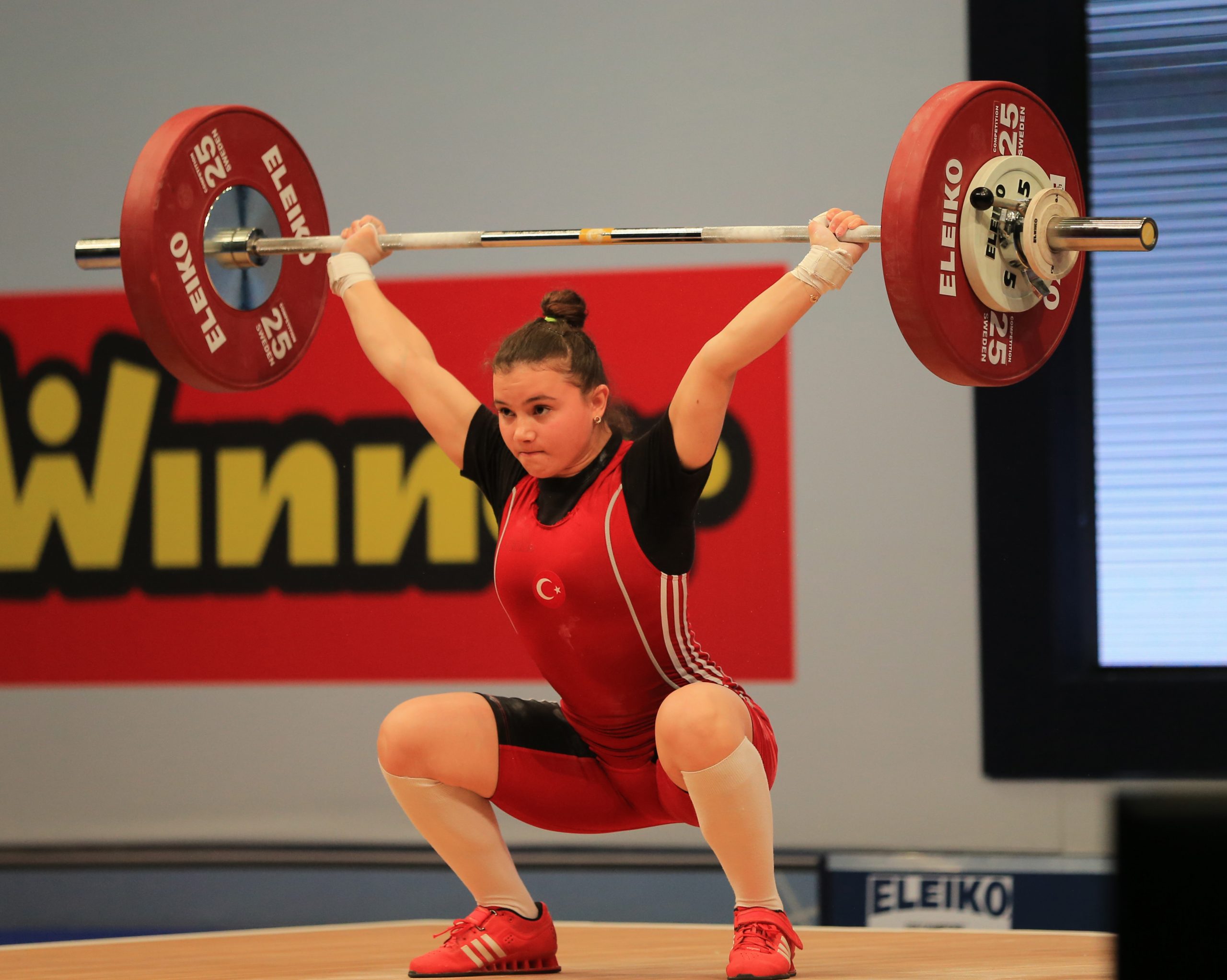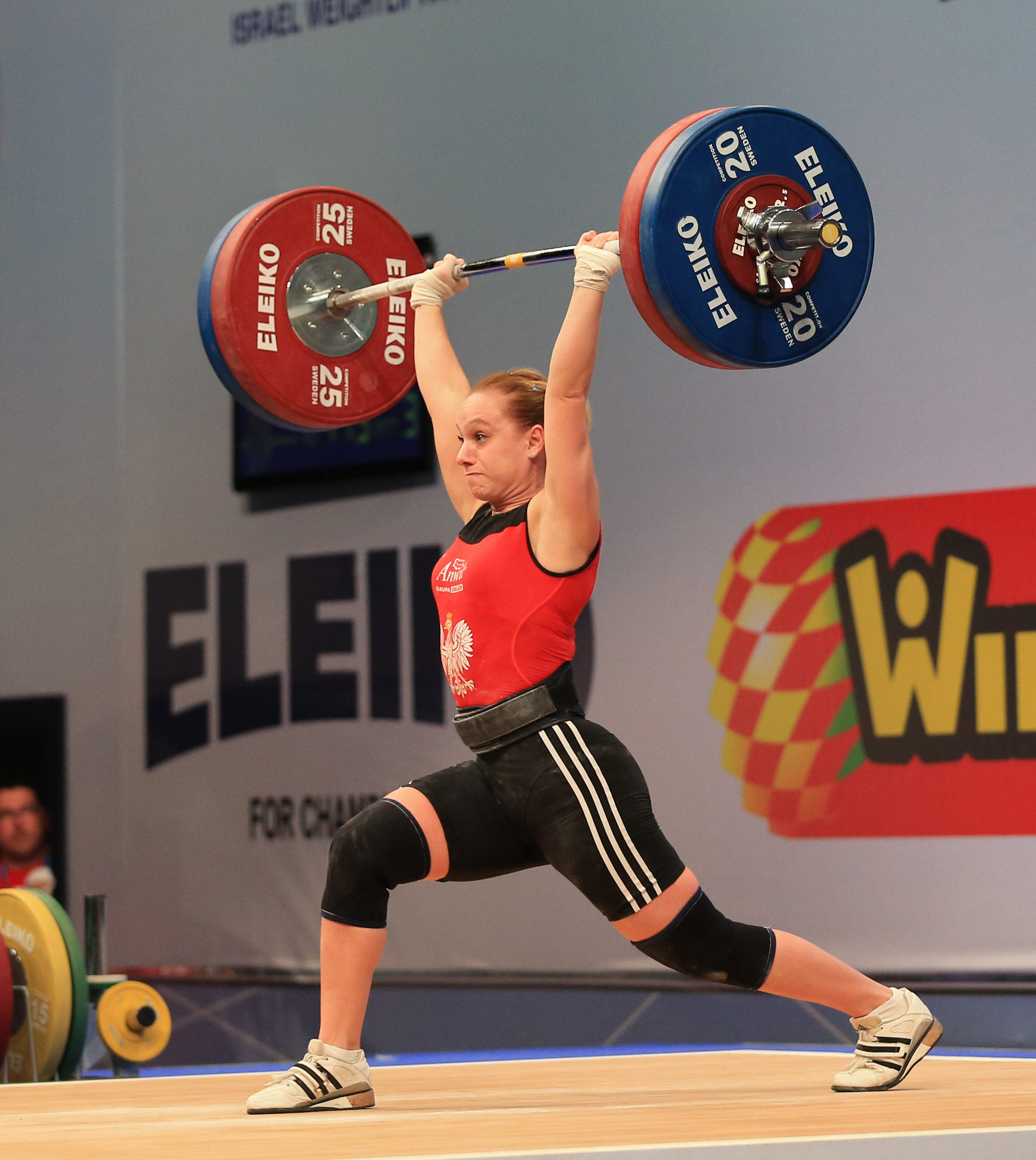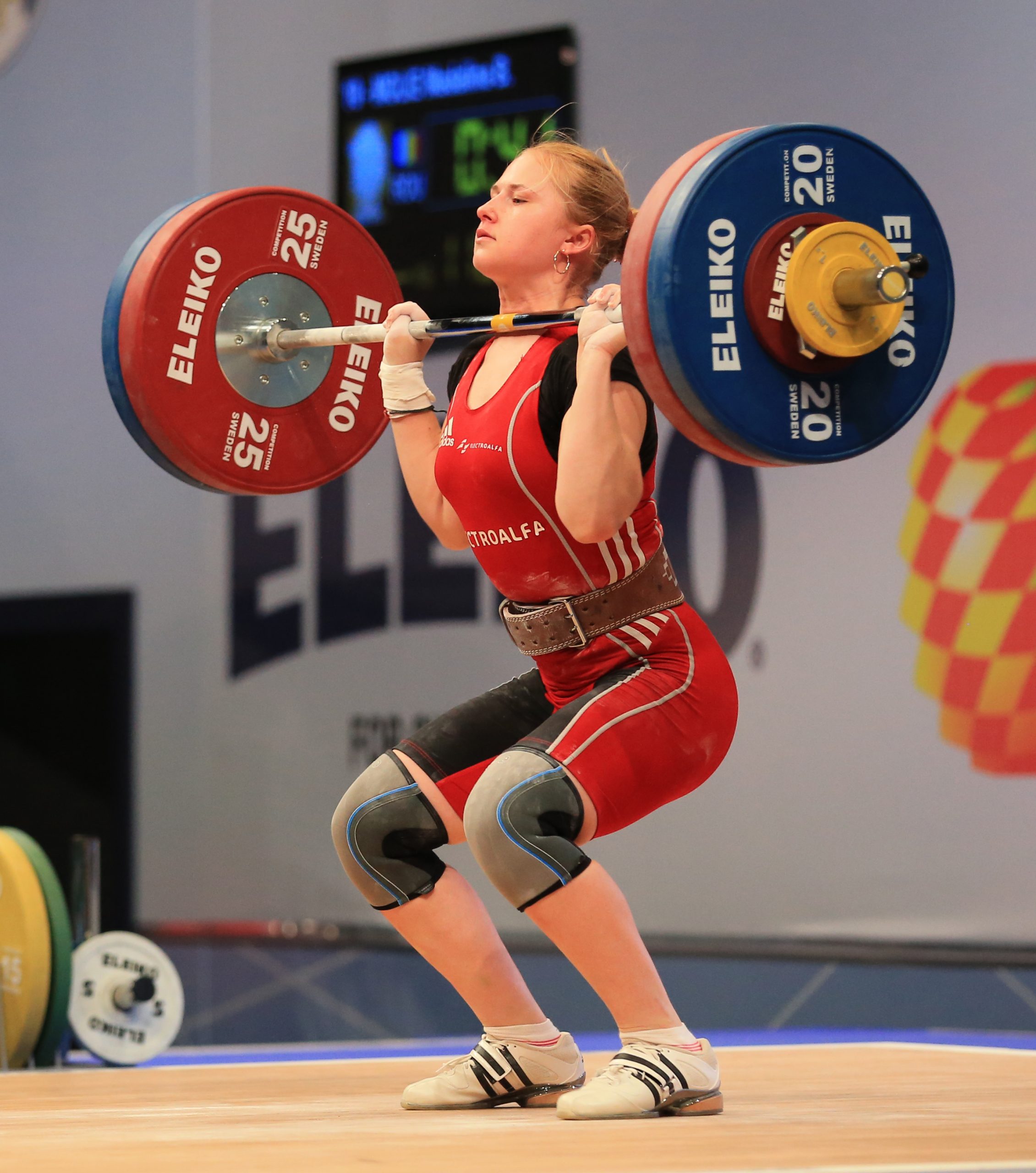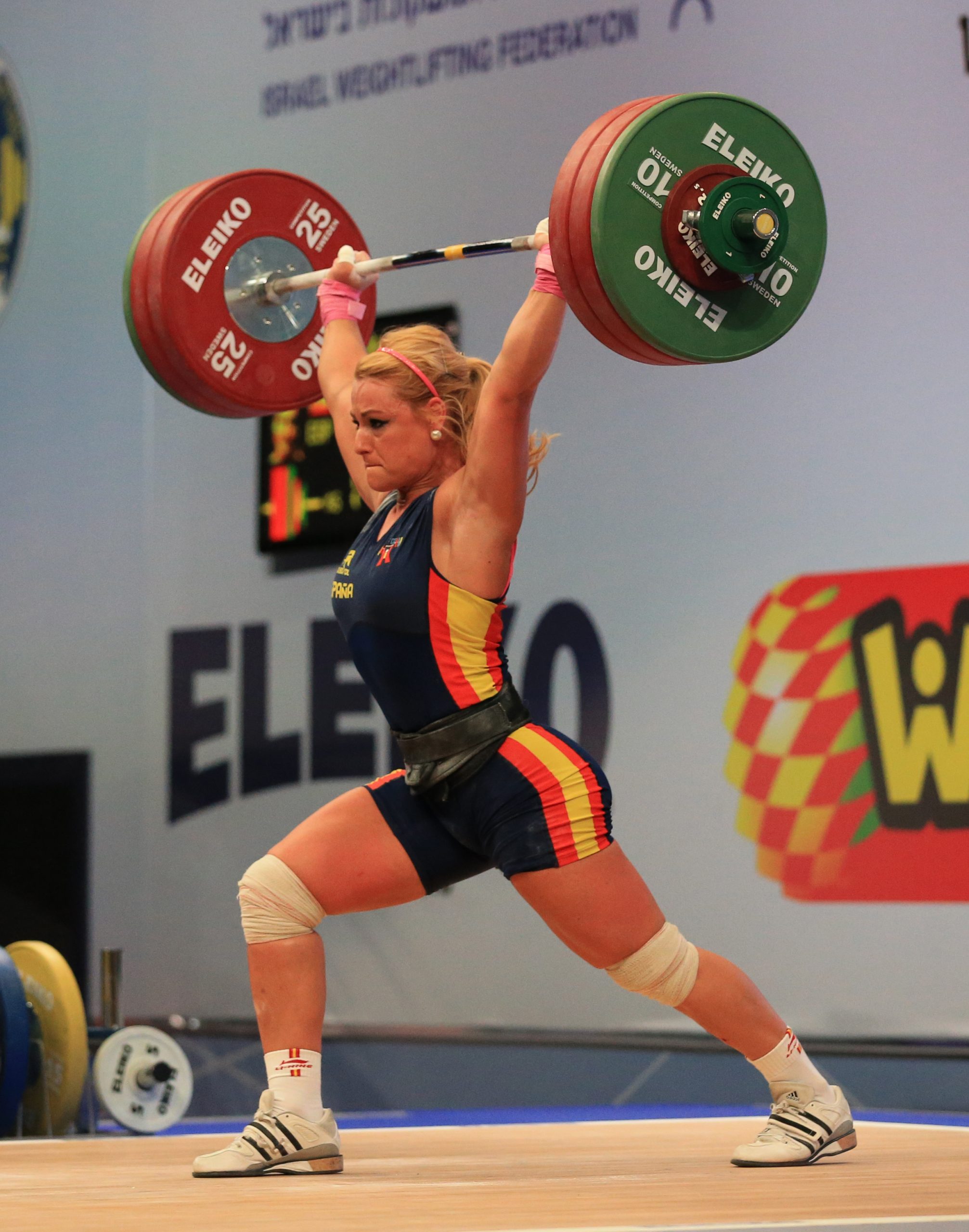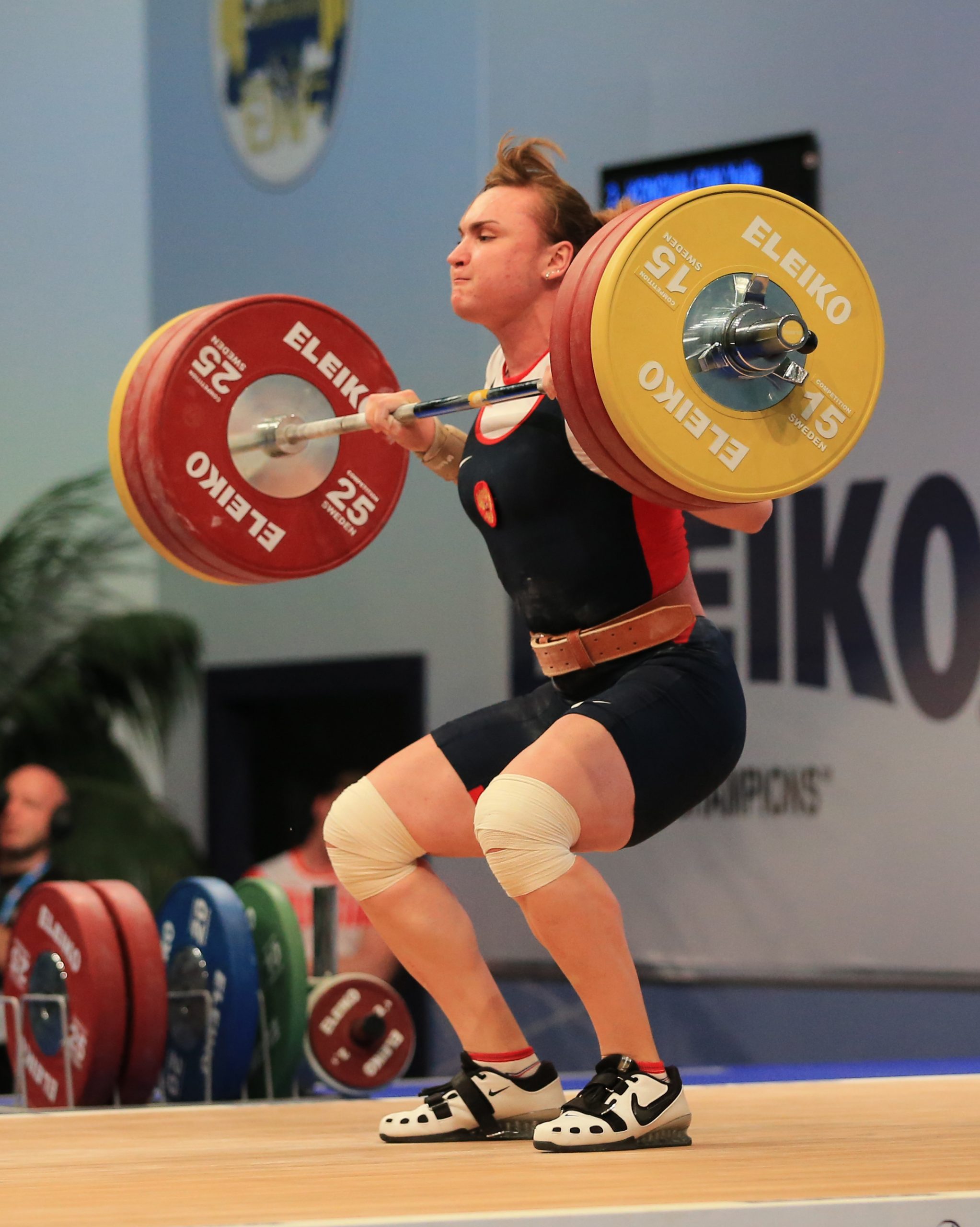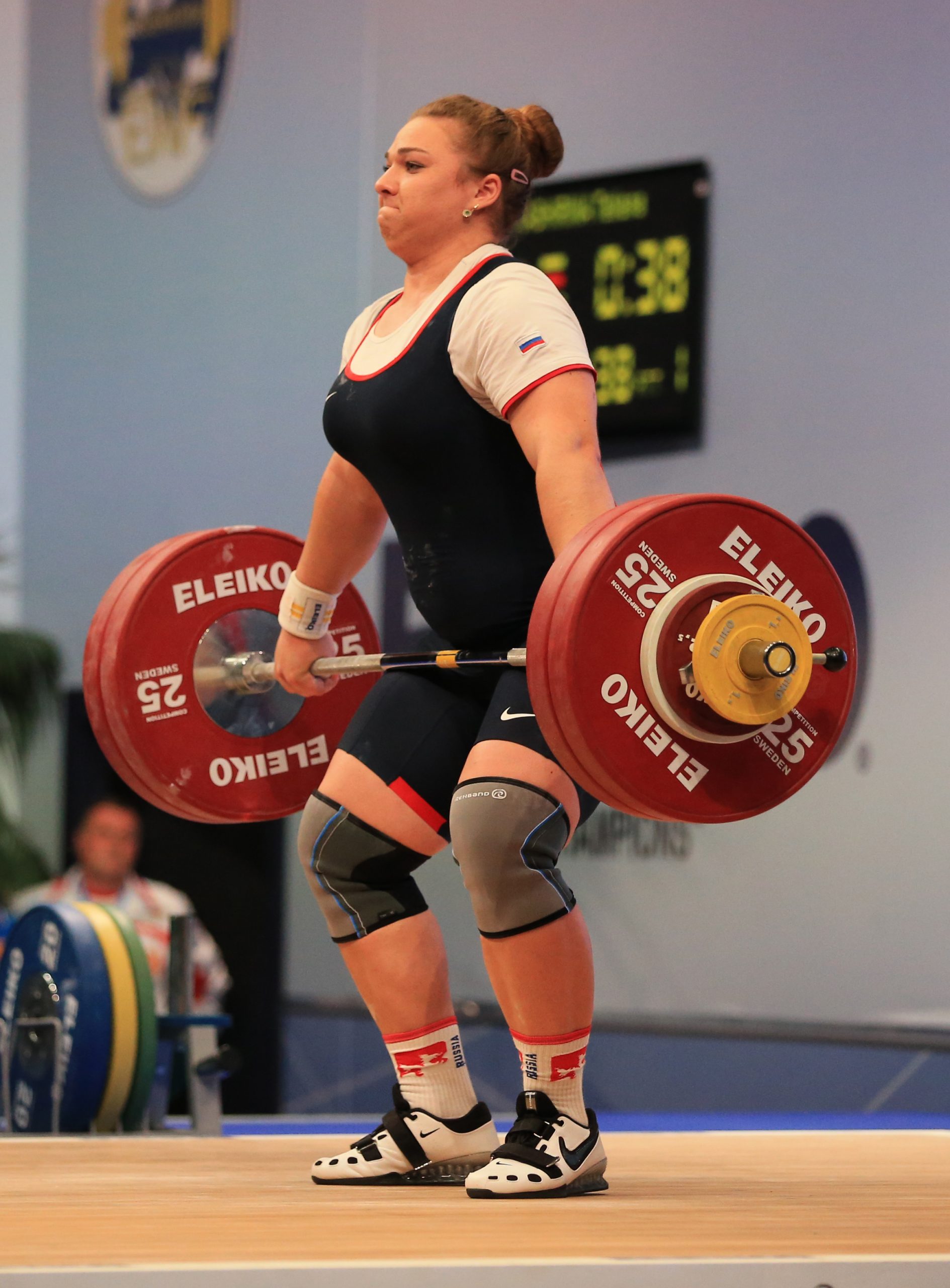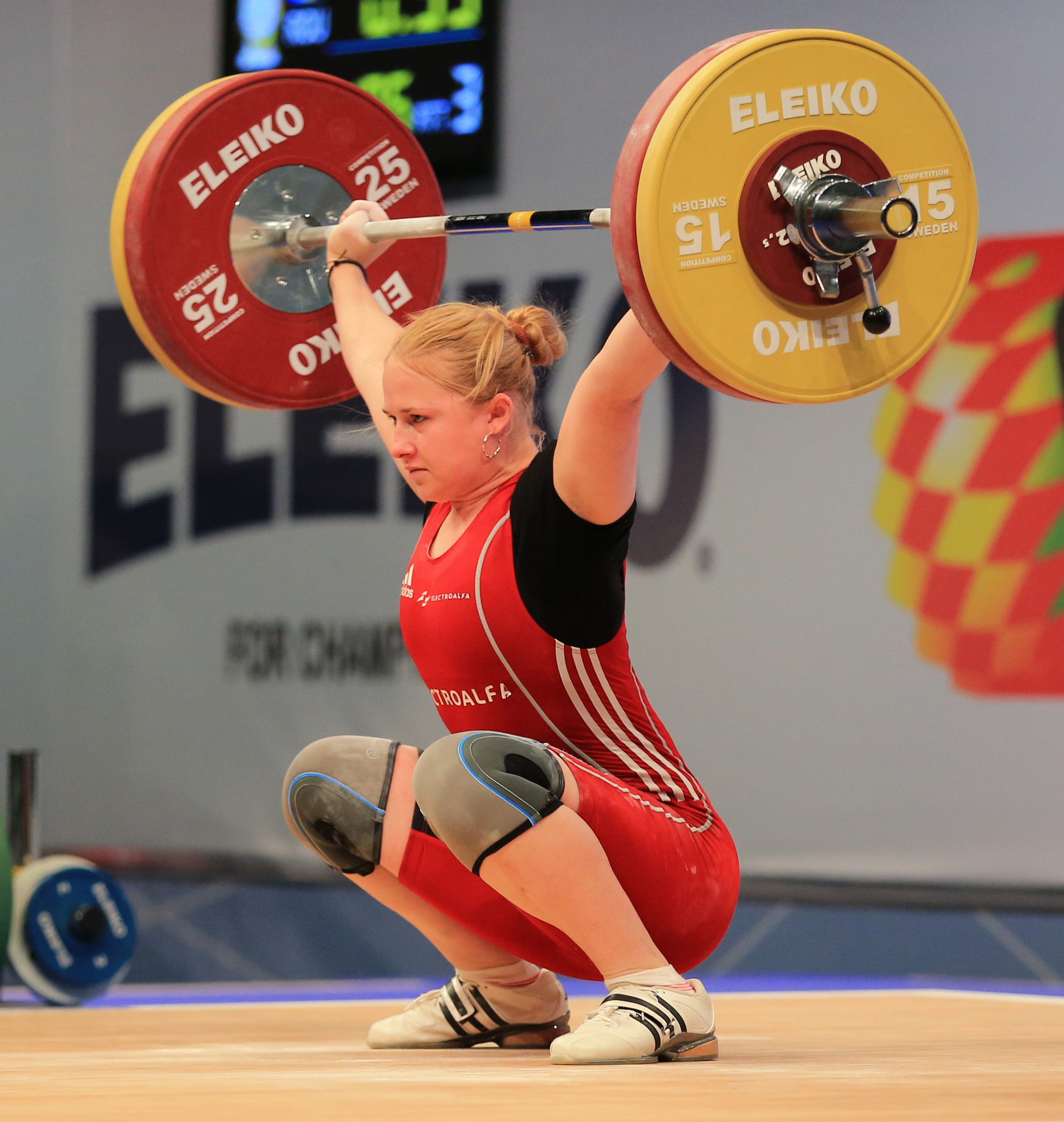 The 2014 European Weightlifting Championships
The 2014 European Weightlifting Championships
Tel Aviv, Israel
Andrew Charniga, Jr.
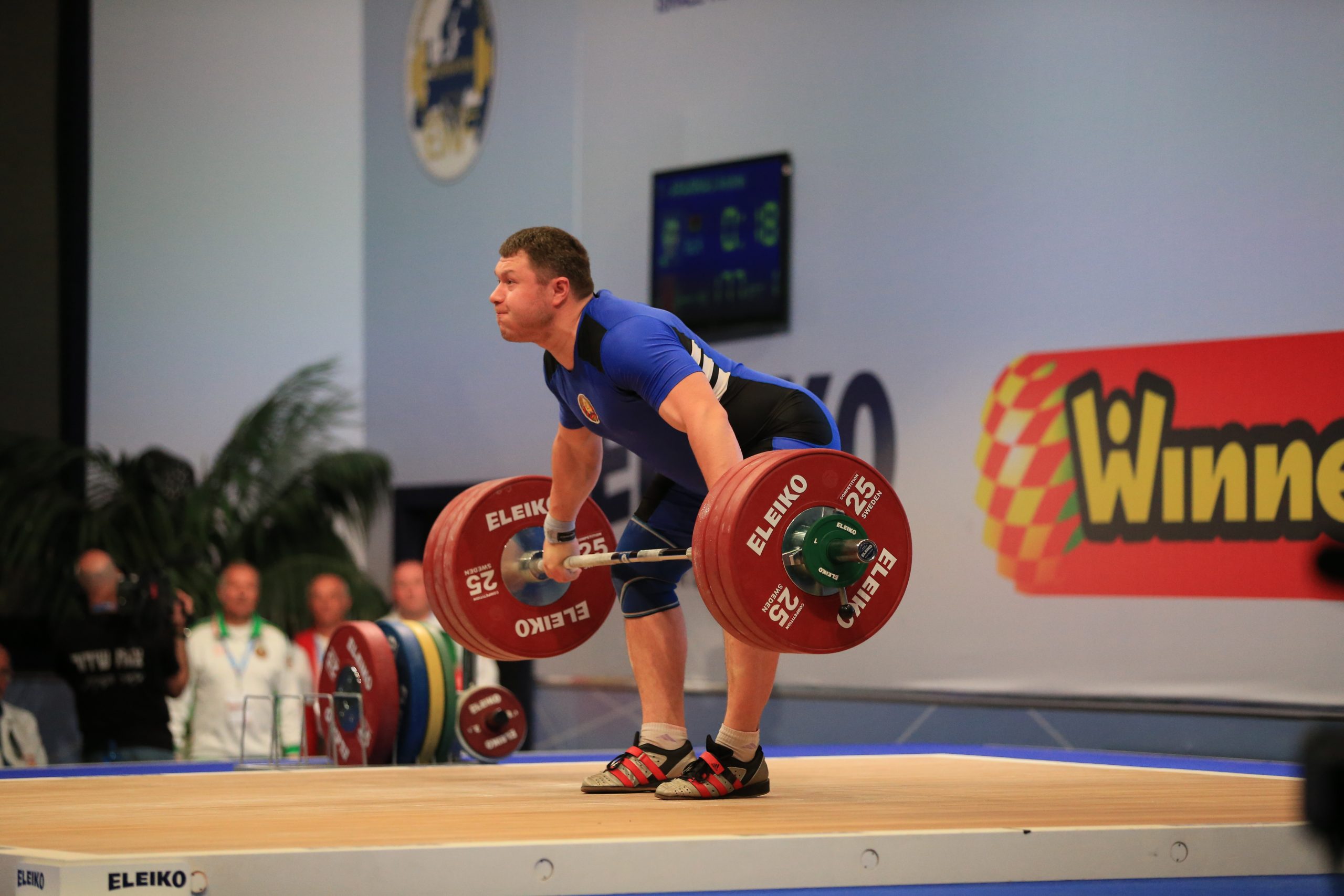 Andrei Aramnau (BLR). Charniga photo
Andrei Aramnau (BLR). Charniga photo
The 2104 European championships were held in Tel Aviv, Israel on April 4 – 12. The location in Tel Aviv, the facilities, were outstanding for competition and for training. The training hall was located right off the beach. The meet hotels were a two minute walk to the training hall. Certainly the best set up for this competition in many years.
General Impressions
In this the second continental competition for the Euros after the London Olympics it was of course considerable interest to see what is new. Unfortunately, not much; for the continent who taught the rest of the world weightlifting sport. New ideas about training, technique, and of course, an influx of young talent would be very helpful. Some of the intensity of past competitions went lacking because there were generally one or two top people in each weight class then the rest with no shot at a gold.
Of the fifteen weight categories contested in London, the European continent could claim only two gold. The remaining 13 – gold medals were awarded to Asia. Since (and inclusive of) the 2000 Olympics the Russians have won a total of one gold medal – D. Beretsov in the 105 kg. The Russians have not earned one Olympic gold medal in female weightlifting, since its inception at the 2000 Olympics.
The most obvious difference between the Asian and European championships is the Asians seem to have an infusion of new blood each year. New blood in the form of young lifters with the prospect of a number of years ahead of them to improve are what drives the hgih level of Asian lifting. There are simply too many old faces at the Europeans, indicative of a lack of money. You can nit pick this simplicity and say it is a lack of incentive, number of participants and so forth, but money, numbers or incentive the outcome is the same.
The most obvious deficiency in the European ranks is in the 56- 77 kg classes. There were only 7 entries in the 62 kg class. By contrast the 85 and 94 classes had 16 each while the largest class was the +105 with 18 lifters. In the women’s camp the 63 and 69 kg classes were the largest with 18 lifters each. An overall lack of depth in most classes, male and female, did not make for an interesting competition.
Something about the training
The training hall was equipped with 15 platforms and unlike some past competitions was very busy. One would be hard pressed to find better conditions, a better location. It was located a 2 minute walk from the meet hotels and a stone’s throw from the Mediterranean. European lifting, in need of new blood and new training ideas, had little to offer. How disconcerting to come half way around the world to this elite completion, only to see, push ups and other calisthenics in the training hall.
Some, clad in only sport bra and panty style shorts, would lay on the platform to perform leg lifts; dips between chairs, dead – lifts, in bare feet an so forth. The aesthetic, the serious nature of final preparation for a continental championships, not to mention simple hygiene, was lost. This was a distressing spectacle, when one is used to seeing weightlifters practice the competition exercises and squats in the run – up to the competition. What is the line from the movie “Full Metal Jacket”: “home of the phoney tough and the crazy brave”.
Olympic champion Andrei Aramnau was here to compete after sporadic appearances at major competitions since the 2008 Olympics. It was a breath of fresh air to watch someone of his caliber get ready for this competition. For the old Soviet weightlifting sport scientists, this guy would have represented the theoretical ideal for this sport; his height conformed to his weight class, coordination, flexibility, psychology.
Aramnau’s, no nonsense, intense focus on the task at hand persona, befitted an Olympic champion.
For anyone under the delusion this is fun and games from watching You tube, hopefully he/she can step away from the net long enough to experience and perhaps recognize the real world is quite different. Until the rest of the lifters came in about 10:30 AM there were just four other people in the training hall when Aramnau trained. No Ear buds, MP3 players, phones, texting, music or other myriad distractions can be found. Lifting in adidas shoes made for the 2004 Olympics, the same frayed singlet he would compete in a few days later, and using seriously frayed cotton straps, Aramnau is a throw back to East European professionals of the 70s and 80s.
The first day his workout looked like this:
1. Front squat: 170/3 x 3; 190/2 x 3
2. Sn. Dead-lift below knee: 70/4
3. Military Press: 70/4 x 4
4. Snatch dead-lift below knee: 120/6 x 3; 140/3 x 3
Exercises 2 and 4 for the life of me look like bad back exercises. If that is true it is not surprising; use your back in weightlifting sooner or later hurt your back. The following day he did some bad back exercise then:
1. snatch 120/1+1 x2; 140/1+1 x 1 (one from the floor and one in the hang position from above the knee;
2. Clean and Jerk: 120/1 x 2; 160/1 x 2
Overall he looked to be a 25 year old with a body going on 35.
He did not hit the very lowest squat position in either snatch or clean; in fact the snatches were almost power snatch. Some things should be, but are not readily apparent. The first lift with with the 120 kg snatch from the floor in exercise #1 was pretty fast but not near as fast as the second. The idea behind this exercise is to increase the intensity with the second repetition and increase likewise the speed of lifting (descending) with lifting from the hang.
However, you do only one lift from the floor in competition, sans the additional conditions to facilitate the speed of descent under the bar. Furthermore, the extra stress to obtain the facilitation comes at the expense of the lumbar spine. A lot of this stuff, combined with pulls, lifts from boxes (plinths of varying height) may not tear up the younger body, but it is cumulative over a period which in our opinion is evinced by a 25 year old doing bad back exercises and somewhat dependent on these facilitated conditions to express speed of lifting.
Another east European lifter was doing a lift to groin height before lowering the barbell to the platform to do a snatch with a maximum weight – without success. This exercise is similar to the just described effort at facilitating the conditions to overcome a heavy weight other than just raising it from the platform. But, just as in the other example the price to pay for all this extra comes at the expense of the weightlifter’s weak link – the lumbar spine.
The problem when dealing with such an extraordinarily complex biological machine like the human body, comprised of 600 plus muscles, 206 bones, miles of areties and nerves, is that one’s knees can hurt because you are using your back disproportionally to lift. So, you start bending less (use of boxes) to save the knees and eventually hurt the back.
So, the question has to arise is the extra effort worth the expense, and, more to the point, is it better than simply trying to lift the weight from the floor; especially this close to competition.
Here is another example. One lifter was performing some kind of half, incomplete jerks from the stands with 195 and 200 kgs after his competition day. In the competition he lifted 170, 175 with a miss at 177 kg. He would remove the weight from the stands make an effort to jerk it while sort of half scissoring his legs before dumping the weight to the floor. Then he and his coach would unload the barbell, place it on the stands, re – load it to 200 kgs, for the next repetition. How half lifting 110% and – above – weights in the jerk from the chest, especially since the extraordinary complexity of this exercise arises and is compounded by the fact it is preceded by a fatiguing clean, would help one lift maximum weights in the clean and jerk in competition is unclear, to say the least.
The Women
Rebeka Koha (LAT). Charniga photo
48 – 53 kg classes
Genny Pagliaro (ITA) made five of six to finish three kilos ahead of Marzina Karpinska (POL). It needs to be pointed out that both lifters are already 26. Nurcan Taylan (TUR) the Olympic champion is already 31 and here missed a 99 kg clean and jerk which is the same weight she narrowly missed in snatch at the 2010 worlds. The future for this class rests with lifters like sixteen year old Rebekah Koha (LAT).
The story of the 53 kg was Coban Aysel (TUR). She jumped seven kilos on her third attempt clean and jerk to 114 kg to make up a seven kg deficit. Pulling the weight in with rough bang on the thighs, notwithstanding, she made an excellent fast jerk to win the gold.
Coban Aysel (TUR). Charniga photo.
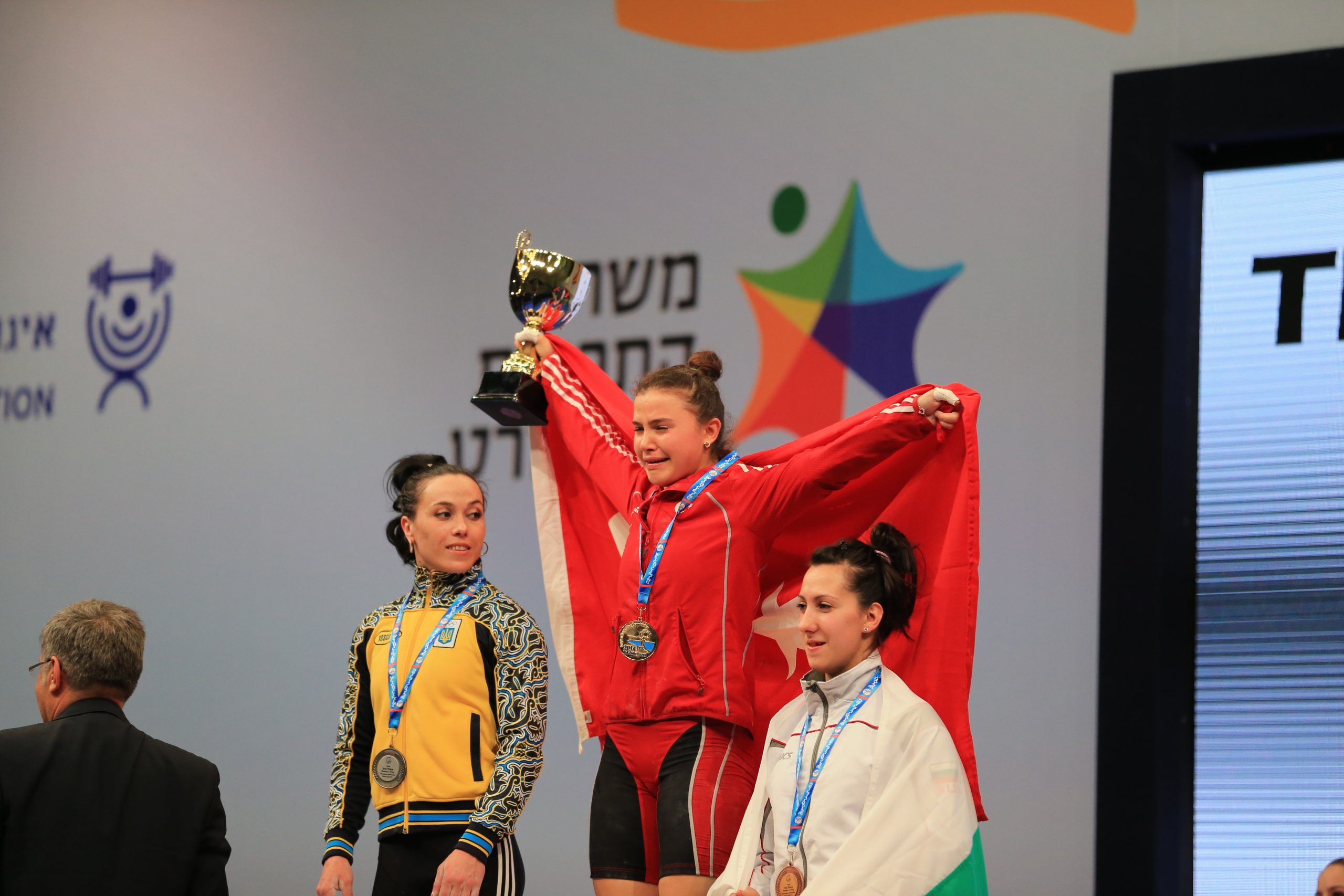 53 kg medalists. Charniga photo
53 kg medalists. Charniga photo
58 – 63 kg classes
The Russians had two ‘B’ team lifters in this session. Consequently, there wasn’t any sparks; just ordinary level results.
Joanna Lochowska (POL) Charniga photos.
Curiously enough 2103 World champion Tima Turieva competed here at a significantly lower level. In Poland back in September she made six good lifts ending with 112 + 141. Here she was lucky to snatch 105 on her third attempt and stopped after a 131 kg clean and jerk. Ulia Kalina (UKR) competed here at 63 kg. She made 94 + 118 in Wroclaw. Here she made three snatches to 103 then three very powerful cleans with a final missed jerk at 130.
Ulia Kalina (UKR) Charniga photo. 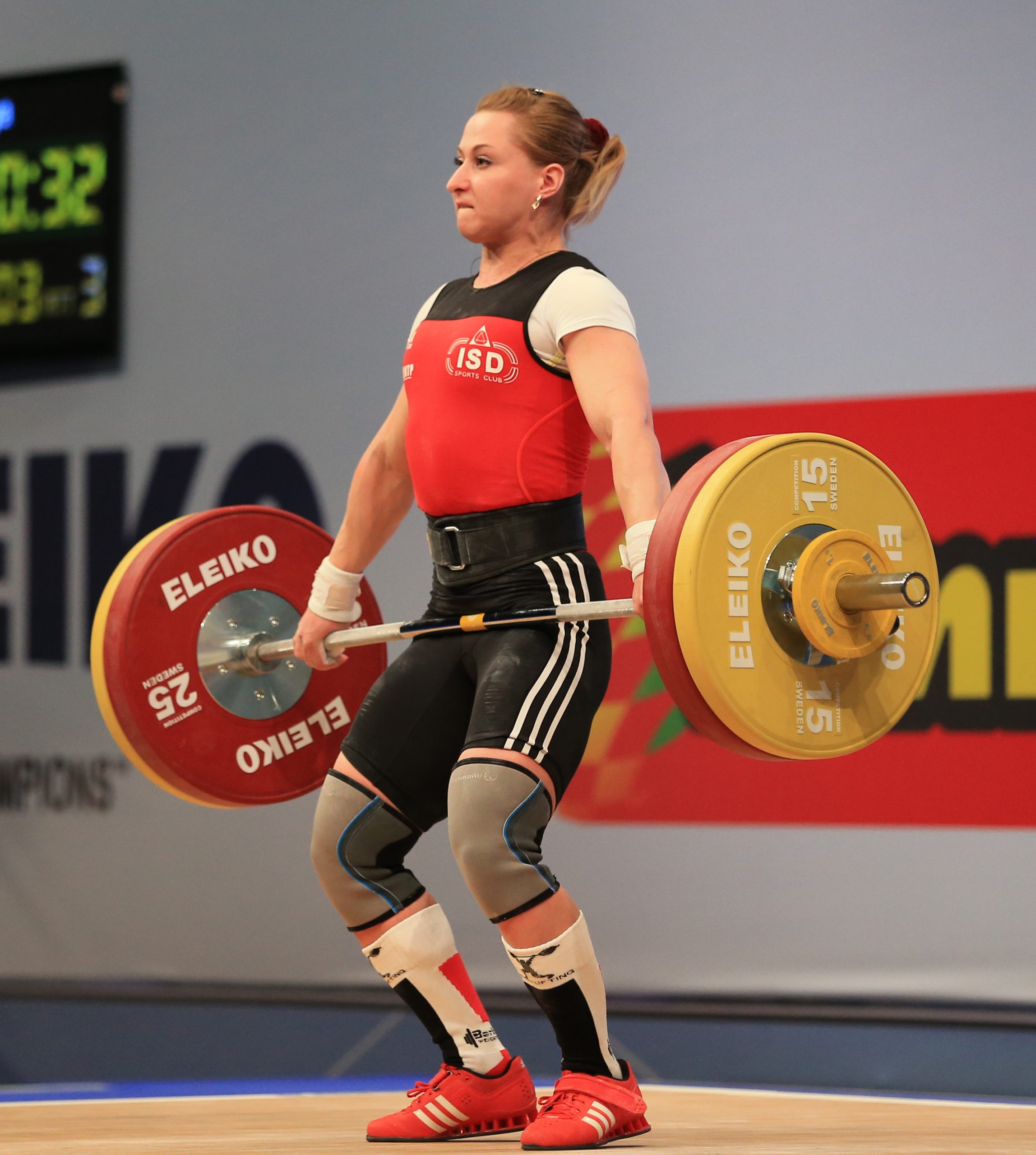 69 – 75 kg classes
69 – 75 kg classes
Madalina Molie (ROU) and Dzina Szanavets (BLR) Charniga photos
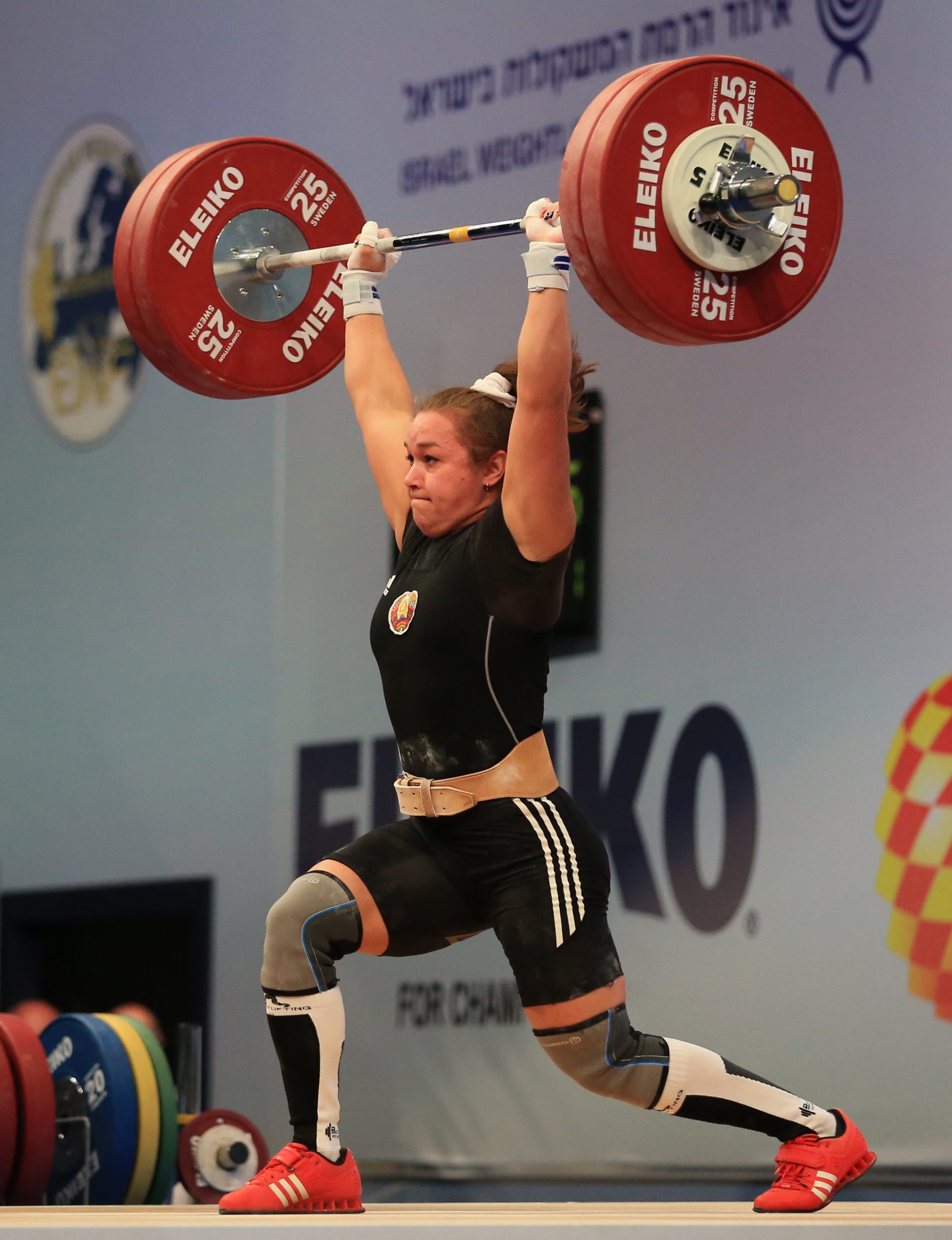 Dzina Szanavets (BLR) walked away with this class by 17 kilos even though she missed 140 kg twice which would have made the difference between gold and silver 27 kg. However, the most interesting competitor in this class was 18 year old Madalina Molie (ROU). She made three smooth snatches finishing with a silver medal 105 kg. She made only one clean and jerk, her third with 125 for the silver was just too much on this occasion. She brings an aesthetic to European weightlifting, an enviable, dynamic femininity.
Dzina Szanavets (BLR) walked away with this class by 17 kilos even though she missed 140 kg twice which would have made the difference between gold and silver 27 kg. However, the most interesting competitor in this class was 18 year old Madalina Molie (ROU). She made three smooth snatches finishing with a silver medal 105 kg. She made only one clean and jerk, her third with 125 for the silver was just too much on this occasion. She brings an aesthetic to European weightlifting, an enviable, dynamic femininity.
Lydia Valentin (ESP) pretty much had this class all to herself. It looked closer on paper than it actually was. Oxana Korpunenko (RUS) and Lydia both snatched 121. Then Korpunenko opened the door with a missed clean on her opener with 136. This let the Spaniard cruise ahead with three easy clean jerks, finishing with 147.
Konovalava and Kashirina (RUS). Charniga photos.
There was no drama here with the two Russians. World champion Kashirina made a decent effort to snatch 148 kg but lost the weight behind. Both her and teammate Konovalova took only two attempts in the clean and jerk, because they were not close and no one else was close to them.


